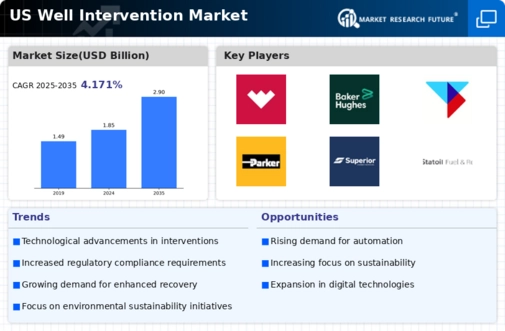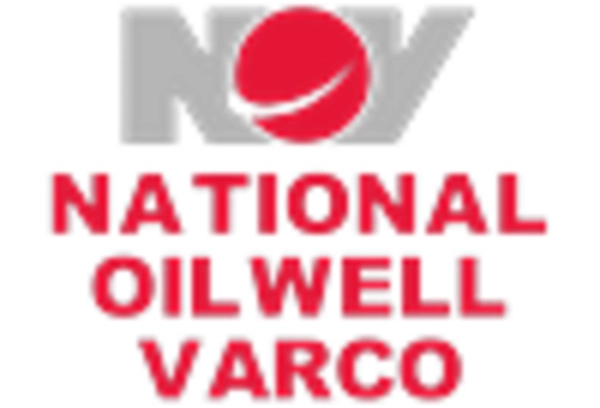Aging Infrastructure
The aging infrastructure of oil and gas wells in the United States presents a significant driver for the well intervention market. Many wells are reaching the end of their productive life, necessitating intervention to restore or enhance their output. The U.S. has thousands of wells that have been in operation for decades, and many require maintenance or upgrades to remain viable. This situation creates a substantial opportunity for well intervention services, as operators look to extend the life of their assets. The American Petroleum Institute has indicated that a considerable portion of the U.S. oil and gas production comes from older wells, which are prime candidates for intervention techniques. As operators invest in revitalizing these assets, the well intervention market is likely to see increased activity and demand for specialized services.
Market Consolidation
Market consolidation within the well intervention sector is emerging as a significant driver. As companies seek to enhance their competitive edge, mergers and acquisitions are becoming more prevalent. This consolidation allows firms to pool resources, share technologies, and expand their service offerings. The trend is particularly noticeable among smaller service providers, which may struggle to compete independently. By joining forces, these companies can better position themselves to meet the growing demands of the well intervention market. Additionally, larger firms can leverage their scale to invest in research and development, further driving innovation. This consolidation trend may lead to a more robust and efficient well intervention market, capable of addressing the complexities of modern oil and gas operations.
Environmental Regulations
The well intervention market is influenced by the evolving landscape of environmental regulations in the United States. Stricter regulations aimed at minimizing environmental impact are prompting operators to adopt more sustainable practices. This shift necessitates the use of advanced well intervention techniques that comply with regulatory standards while ensuring efficient resource extraction. For instance, the implementation of hydraulic fracturing regulations has led to the development of more environmentally friendly intervention methods. As companies strive to meet compliance requirements, the demand for specialized services in the well intervention market is likely to rise. Furthermore, the emphasis on reducing carbon footprints may drive innovation in intervention technologies, aligning with broader sustainability goals.
Technological Innovations
Technological innovations are playing a crucial role in shaping the well intervention market. Advances in tools and techniques, such as coiled tubing and wireline services, are enhancing the efficiency and effectiveness of interventions. These innovations allow for more precise operations, reducing downtime and costs associated with well maintenance. The integration of digital technologies, such as data analytics and remote monitoring, is also transforming how interventions are planned and executed. According to industry reports, the adoption of advanced technologies could potentially reduce operational costs by up to 20%. As operators seek to leverage these advancements to improve productivity and safety, the well intervention market is expected to benefit from increased investment in cutting-edge solutions.
Increased Oil and Gas Demand
The well intervention market is experiencing growth due to the rising demand for oil and gas in the United States. As energy consumption continues to increase, operators are compelled to enhance production from existing wells. This trend is particularly evident in shale formations, where well intervention techniques are employed to optimize output. According to the Energy Information Administration, U.S. crude oil production is projected to reach approximately 13 million barrels per day by 2025. This surge necessitates effective well intervention strategies to maintain and boost production levels, thereby driving investments in this market. Furthermore, the need for efficient resource management and cost-effective solutions is likely to propel the well intervention market forward, as companies seek to maximize returns on their investments.

















Leave a Comment